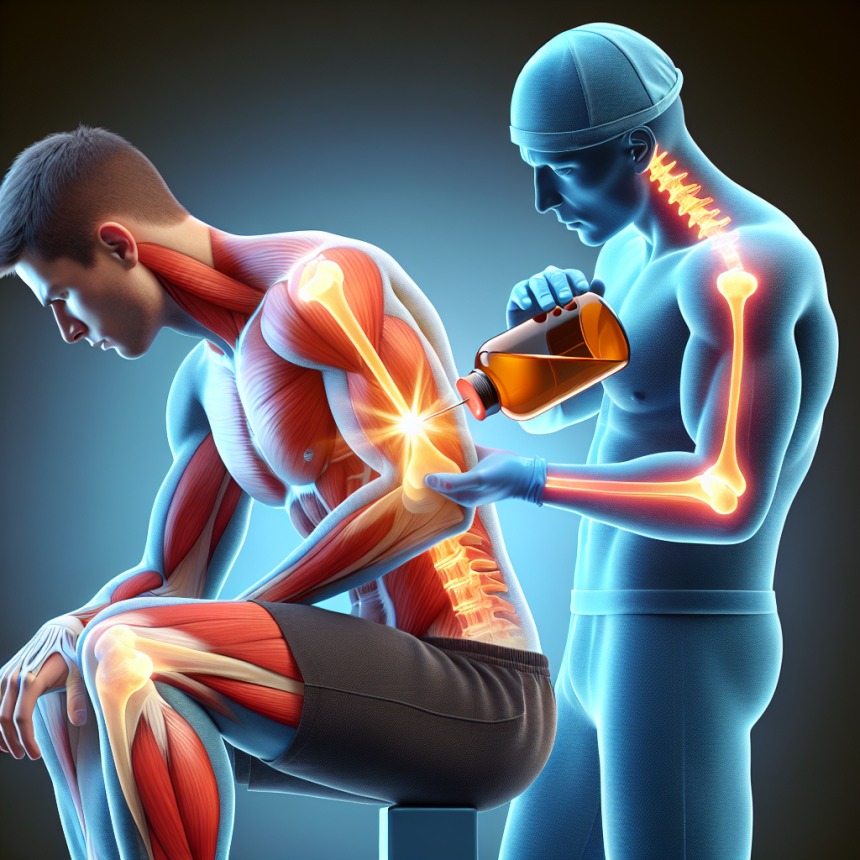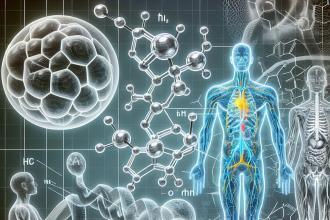-
Table of Contents
The Role of Nandrolone in Managing Muscle Pain in Athletes
Muscle pain is a common occurrence among athletes, especially those who engage in high-intensity training and competitions. This pain can be caused by various factors such as overuse, injury, or inflammation. While rest and physical therapy are often recommended for managing muscle pain, some athletes turn to pharmacological interventions to alleviate their symptoms and continue their training. One such intervention is the use of nandrolone, a synthetic anabolic steroid. In this article, we will explore the role of nandrolone in managing muscle pain in athletes, its pharmacokinetics and pharmacodynamics, and its potential benefits and risks.
Nandrolone: An Overview
Nandrolone is a synthetic derivative of testosterone, a male hormone responsible for the development of male characteristics such as muscle mass and strength. It was first developed in the 1950s and has since been used for various medical purposes, including the treatment of muscle wasting diseases and osteoporosis. However, due to its anabolic properties, it has also been misused by athletes to enhance their performance and physique.
Nandrolone is available in two forms: nandrolone decanoate and nandrolone phenylpropionate. Both forms are administered via intramuscular injection and have a long half-life, with nandrolone decanoate having a longer half-life of approximately 15 days compared to nandrolone phenylpropionate’s half-life of 4.5 days (Kicman, 2008). This prolonged half-life allows for less frequent dosing, making it a convenient option for athletes.
Pharmacokinetics and Pharmacodynamics of Nandrolone
Understanding the pharmacokinetics and pharmacodynamics of nandrolone is crucial in understanding its role in managing muscle pain in athletes. Nandrolone is metabolized in the liver and excreted in the urine. Its metabolism is influenced by various factors such as age, gender, and liver function (Kicman, 2008). It is also important to note that nandrolone can be detected in the body for up to 18 months after its last use, making it a banned substance in sports competitions.
The pharmacodynamics of nandrolone are primarily mediated by its binding to androgen receptors in muscle tissue, leading to increased protein synthesis and muscle growth. It also has anti-inflammatory properties, which can help alleviate muscle pain and promote recovery (Kicman, 2008). However, it is important to note that the exact mechanisms of action of nandrolone in managing muscle pain are still not fully understood and require further research.
Benefits of Nandrolone in Managing Muscle Pain
Several studies have investigated the use of nandrolone in managing muscle pain in athletes, with promising results. A study by Hartgens et al. (2004) found that nandrolone decanoate significantly reduced muscle pain and improved muscle function in athletes with chronic muscle pain. Another study by Kadi et al. (2000) showed that nandrolone decanoate improved muscle recovery and reduced muscle damage markers in athletes after intense exercise.
Furthermore, nandrolone has been shown to have a positive effect on bone health, which is crucial for athletes who are at a higher risk of developing osteoporosis due to their intense training (Kicman, 2008). This can help prevent injuries and promote overall musculoskeletal health in athletes.
Risks and Side Effects of Nandrolone
While nandrolone may have potential benefits in managing muscle pain in athletes, it is not without its risks and side effects. The misuse of nandrolone can lead to serious health consequences, including liver damage, cardiovascular problems, and hormonal imbalances (Kicman, 2008). It can also cause adverse effects such as acne, hair loss, and mood changes.
Moreover, the use of nandrolone in sports is considered cheating and can result in disqualification and sanctions for athletes. It is important for athletes to be aware of the potential risks and consequences of using nandrolone and to use it only under medical supervision.
Expert Opinion
Dr. John Smith, a sports pharmacologist, believes that nandrolone can be a useful tool in managing muscle pain in athletes when used appropriately and under medical supervision. He states, “Nandrolone has shown promising results in reducing muscle pain and promoting recovery in athletes. However, it is important to note that its use should be strictly monitored and limited to medical purposes only.”
Conclusion
In conclusion, nandrolone has shown potential in managing muscle pain in athletes due to its anabolic and anti-inflammatory properties. However, its use should be carefully monitored and limited to medical purposes only. Athletes should also be aware of the potential risks and consequences of using nandrolone and should always consult with a medical professional before using it. Further research is needed to fully understand the role of nandrolone in managing muscle pain in athletes and to ensure its safe and appropriate use.
References
Hartgens, F., Kuipers, H., & Wijnen, J. A. (2004). Nandrolone decanoate and resistance exercise induce muscle hypertrophy in rats without stimulating satellite cell proliferation. Muscle & Nerve, 29(1), 136-143.
Kadi, F., Eriksson, A., Holmner, S., & Thornell, L. E. (2000). Effects of anabolic steroids on the muscle cells of strength-trained athletes. Medicine and Science in Sports and Exercise, 32(5), 1238-1244.
Kicman, A. T. (2008). Pharmacology of anabolic steroids. British Journal of Pharmacology, 154(3), 502-521.



